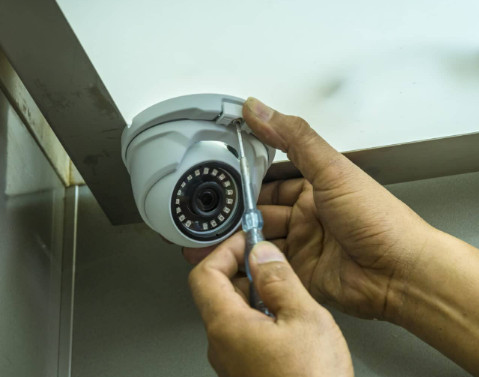
How to DIY Your Home Security
In today's world, ensuring the safety of your home is more important than ever. With rising crime rates and the increasing need for personal security, many homeowners are turning to DIY home security solutions. This approach not only saves money but also gives you complete control over your security system. In this article, we will explore various DIY home security options, tips for implementation, and the benefits of taking your home security into your own hands.
Understanding DIY Home Security
DIY home security refers to setting up security measures without professional help. This can include installing security cameras, motion detectors, alarms, and even smart home devices. The beauty of DIY solutions is the flexibility and customization they offer. You can tailor your security system to fit your specific needs, lifestyle, and budget.
Benefits of DIY Home Security
Cost-Effective: One of the most significant advantages of DIY home security is cost savings. Hiring a professional to install a security system can be expensive, whereas purchasing tools and equipment for a DIY project is generally much cheaper.
Customization: With DIY home security, you have the freedom to design a system that suits your unique requirements. You can choose the types of cameras, sensors, and alarms that are most relevant to your property.
Control: When you set up your own system, you have complete control over the installation and monitoring processes. You can adjust settings, add new devices, and troubleshoot issues without relying on a third party.
Easy Maintenance: DIY systems often come with user-friendly interfaces, making it simple to perform routine maintenance or upgrades. You can quickly replace batteries, update software, or change configurations as needed.
Choosing the Right Components for Your DIY Home Security System
When setting up a DIY home security system, selecting the right components is crucial. Here are some essential elements to consider:
Security Cameras: Surveillance cameras are a fundamental part of any security system. Choose from wired or wireless options, and consider features like night vision, motion detection, and remote access. Look for cameras with high-resolution video to ensure clear images.
Motion Detectors: These devices alert you when movement is detected in specific areas of your home. You can place them near entry points, driveways, or other vulnerable areas. Many modern motion detectors are pet-friendly, reducing false alarms caused by pets.
Alarm Systems: An effective alarm system can deter intruders and alert you to potential threats. Choose a system that allows you to receive notifications on your phone or through a central hub in your home. Many DIY alarm systems come with features like door/window sensors and panic buttons.
Smart Home Integration: If you’re already using smart devices, consider integrating your security system with your smart home setup. This allows for seamless control and automation. You can use voice commands, smartphone apps, or smart home hubs to manage your security system.
Lighting: Outdoor lighting can be an effective deterrent against intruders. Motion-activated lights can illuminate your yard or entryways when movement is detected. This not only enhances security but also makes your home more welcoming.
Setting Up Your DIY Home Security System
Once you have selected the components for your DIY home security system, it’s time to set it up. Follow these steps for a successful installation:
Assess Your Property: Walk around your home and identify vulnerable entry points, such as doors and windows. Make a note of areas that require additional surveillance or lighting.
Plan Your Layout: Decide where to place your security cameras, motion detectors, and alarm systems. Ensure that cameras cover all crucial areas, such as driveways, entrances, and backyards.
Install Cameras: If you are using wireless cameras, follow the manufacturer’s instructions for connecting them to your Wi-Fi network. For wired cameras, ensure that you have the necessary tools and materials for installation. Use mounting brackets and secure them properly.
Set Up Motion Detectors: Install motion detectors at entry points and in areas where you want to monitor activity. Make sure they are positioned to avoid obstructions and are within range of the areas you wish to monitor.
Configure Your Alarm System: Follow the instructions provided with your alarm system for setup. Connect sensors to doors and windows, and test the system to ensure it works correctly.
Integrate Smart Devices: If your security system is compatible with smart home devices, connect them as per the guidelines. This may involve downloading apps and linking devices through your home network.
Regular Testing and Maintenance
After your DIY home security system is set up, it’s essential to conduct regular testing and maintenance. Check the functionality of your cameras and motion detectors, ensuring they are positioned correctly and capturing clear footage. Replace batteries in sensors and alarms as needed, and update software for your devices to keep them secure.
Educating Your Family
A crucial aspect of any home security system is ensuring that all family members understand how to use it. Teach them how to activate and deactivate alarms, respond to alerts, and operate the security devices. Having a family plan in case of an emergency can make a significant difference in your overall safety.
Conclusion
DIY home security is an effective way to protect your home while saving money and gaining flexibility. By choosing the right components, setting up your system carefully, and maintaining it regularly, you can create a robust security solution tailored to your needs. With the right approach, you can enjoy peace of mind knowing that your home is secure. Whether you’re new to home security or looking to upgrade your existing system, a DIY approach can empower you to take control of your safety. Start your journey towards a safer home today by exploring the vast array of DIY home security options available.